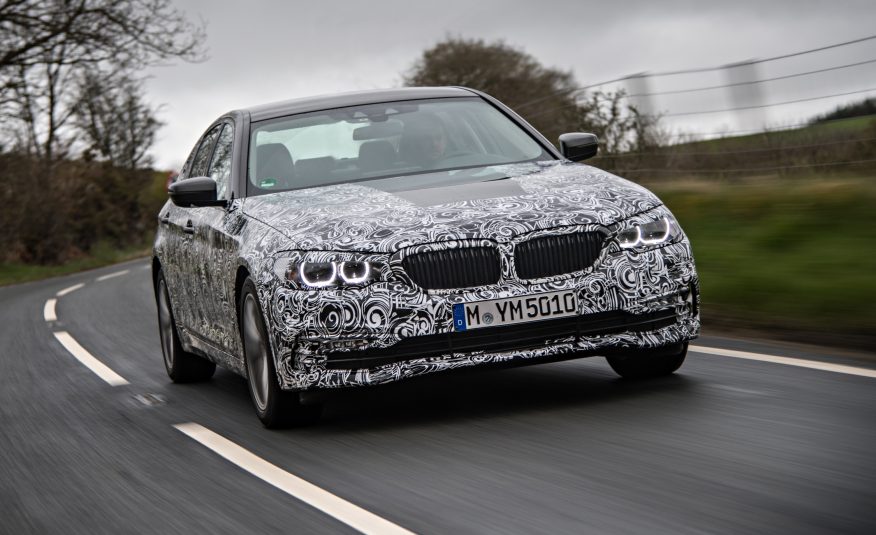BMW engineers declared the key goals for this seventh-generation 5-series to be the following: Sustain the current model’s sales success amounting to two million cars (globally) in the past five years; be the sportiest entry in the luxury-mid-size segment; provide a smooth ride with excellent body-motion control and outstanding agility; and offer customers around the world a business-oriented limousine equipped with a pleasant Sport suspension.

A significant new feature is an “Adaptive” button on the centre console that automatically switches between Comfort and Sport chassis modes depending on the driver’s speed and behaviour. When Adaptive is selected, throttle response, transmission-shift schedule, steering effort, and damping firmness all change according to the console-button positions: Sport, Comfort, Adaptive, and Eco Pro.
Under general observations, we were impressed by the new 5’s structural integrity. As intended, it feels light on its feet and responds distinctly linearly to steering commands. The steering is tight on-centre and not disturbed by brake applications.
However, we found the base steering effort too low, and feedback from the road through the guidance hardware to the driver’s hands was absent.

Alexander Meske, BMW’s head of integrated application driving dynamics for the 5-series, hosted our final drive in a 530i equipped with base suspension, conventional non-adjustable dampers, rear-drive, and 18-inch run-flat tyres. His task was to change steering calibrations on the fly via his laptop to determine if such alterations were perceptible—and appreciated—by the driver.
At the touch of his computer, he could vary the width of the steering-effort valley at the on-centre location and change the slope of the effort-increase curves. We had no difficulty detecting precisely what he was up to.

After successfully passing his test, we challenged Meske to tweak the variables that interested us most: how quickly the steering responds and how much road feel and feedback it delivers to the driver.
Unfortunately, changing those calibrations is beyond the reach of Meske’s computer dialogue with the 5-series’s electrically assisted rack-and-pinion steering. He stressed that few, if any, BMW customers around the globe are requesting more tactility in their steering.
Instead, the opposite is true; one of the most frequent words voiced during customer surveys is “isolation.” The buyers find that a desirable trait.

Let’s hope that the astute BMW engineers responsible for determining the 5’s personality keep all the well-meaning suggestions they’ve gathered in perspective.
A growing fan club is terrific as long as the core virtues supporting BMW’s reputation—impeccable dynamics enhanced by an intelligent dialogue with the driver—aren’t forgotten. The new BMW 5-series will bow at the Detroit Auto Show in January, and cars should arrive at U.S. dealers shortly thereafter.


Comments are closed.